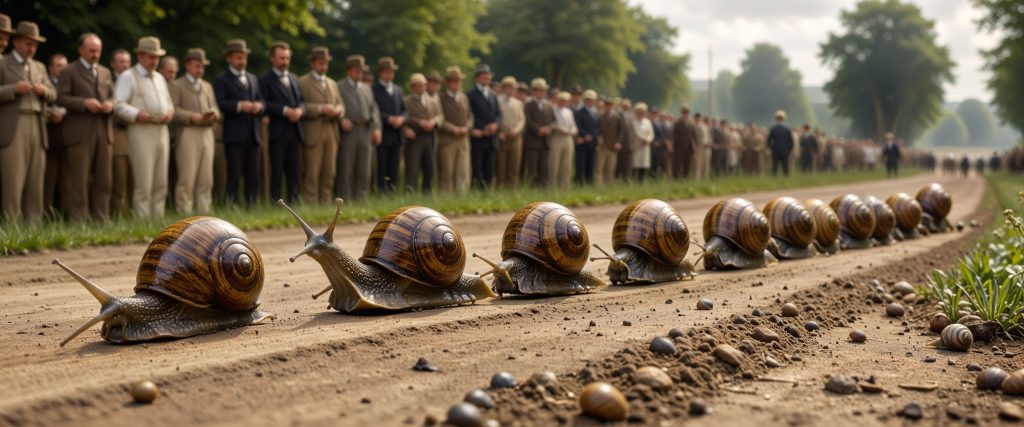In the summer of 1895, the quaint village of Escargotville became the unlikely epicenter of a peculiar yet prestigious event—the first-ever Snail Racing Championship. This unique competition saw snails and their dedicated trainers gather from across the region, transforming a leisurely pastime into a celebrated spectacle.
The origins of snail racing as a competitive event can be traced back to this historic year, where the inspiration came from similar whimsical contests held in European gardens. Enthusiastic trainers had spent months preparing their molluscan athletes, employing various methods to enhance their performance. Techniques included specialized diets and custom-built, miniature racing tracks designed to replicate optimal racing conditions.
The championship was held on a damp, circular track, meticulously prepared to keep the snails in their best racing form. Competitors were marked with small numbers on their shells to distinguish them. The rules were simple: the first snail to reach the outer perimeter of the 13-inch track would be declared the winner.
The highlight of the event was the final race, where a particularly spry snail named “Speedy Gaston” emerged victorious, much to the delight of the spectators. Speedy Gaston, trained by the renowned local enthusiast Sir Slimington, completed the race in a record-setting time, thus etching his name into the annals of snail racing history.
This event not only provided light-hearted entertainment but also brought the community together, celebrating the charm and slow-paced thrill of snail racing. The success of the 1895 championship laid the foundation for what would become an enduring tradition, captivating snail racing enthusiasts for generations to come.
Actual knowledge about the theme
For more on the quirky world of snail racing, visit the World Snail Racing Championship history page and The Week’s article on snail racing.





